Yayoi Kusama is one of the most important contemporary Japanese artists. The prophetess in her own country needed a long 80 years to score at the highest level and to be honored for her cultural merits with Bunka Kunsho, the Japanese Order of Culture. In the Seto Inland Sea on Naoshima Island are two of her famous pumpkins with polka dots.
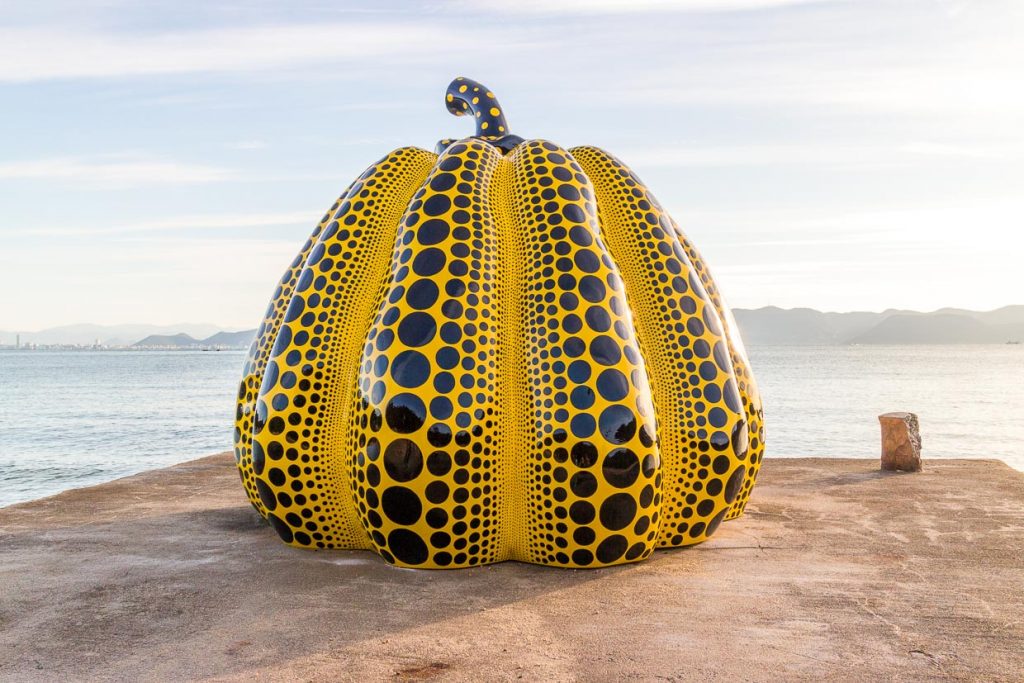
The 93-year-old Kusama was born in 1929 in the rural provincial town of Matsumoto in Nagano Prefecture. She was determined from an early age to become a painter, and her mother wanted her daughter to grow up traditionally. Constant pressure and rejection from her mother, it is thought, may have led to Kusama’s illness, which began in childhood. She suffered from hallucinations. Kusama saw dot and web patterns and feared dissolving into them. The hallucinations became part of her art. As early as 1939, she made drawings in which she processed the patterns.
From 1955 her works were exhibited abroad. She attracted international attention with large-scale works, installations and happenings, especially in the U.S. In 1977, Kusama returned to Japan. She voluntarily enters a psychiatric clinic in Tokyo, where she lives and works to this day. In her late work, the dots return. Yayoi Kusama combines the polka dots of her early works with objects from nature. The pumpkin becomes an important motif for her dotted installations.
“Our earth is like a small Polka Dot among millions of other celestial bodies; a sphere full of hatred and strife in the midst of the peaceful, silent spheres.”
Quote from “An open letter to my hero, Richard. M. Nixon, 1968, Yoyai Kusama. In this open letter to President Nixon, Kusama offers to have sex with him if he would end the Vietnam War. Echoing the famous slogan of the hippie and anti-war movement, which in 1967 called for “Make love, not war”
Typhoon sends pumpkin reeling
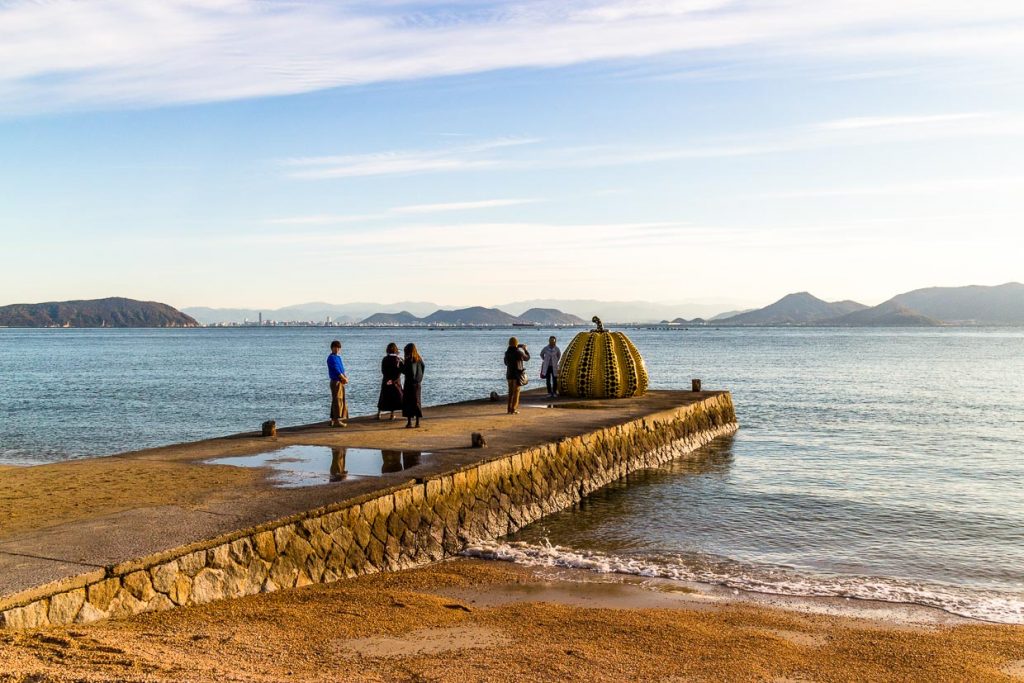
Naoshima is a small island in the middle of the Seto Inland Sea, between the main islands of Honshu and Shikoku. Naoshima is home to several museums of the Benesse Art Site, a foundation that has attracted art and architecture lovers from all over the world for many years. Established by the Fukutake family, owners of the Benesse Holdings education group, the foundation has been creating museums and public art installations on Naoshima and the islands of Teshima and Inujima since 1987. The yellow pumpkin by Yayoi Kusama has become a real landmark of Naoshima. Already since 1994 it stands very exposed on a jetty, directly at the sea and close to the Benesse Art Museums.
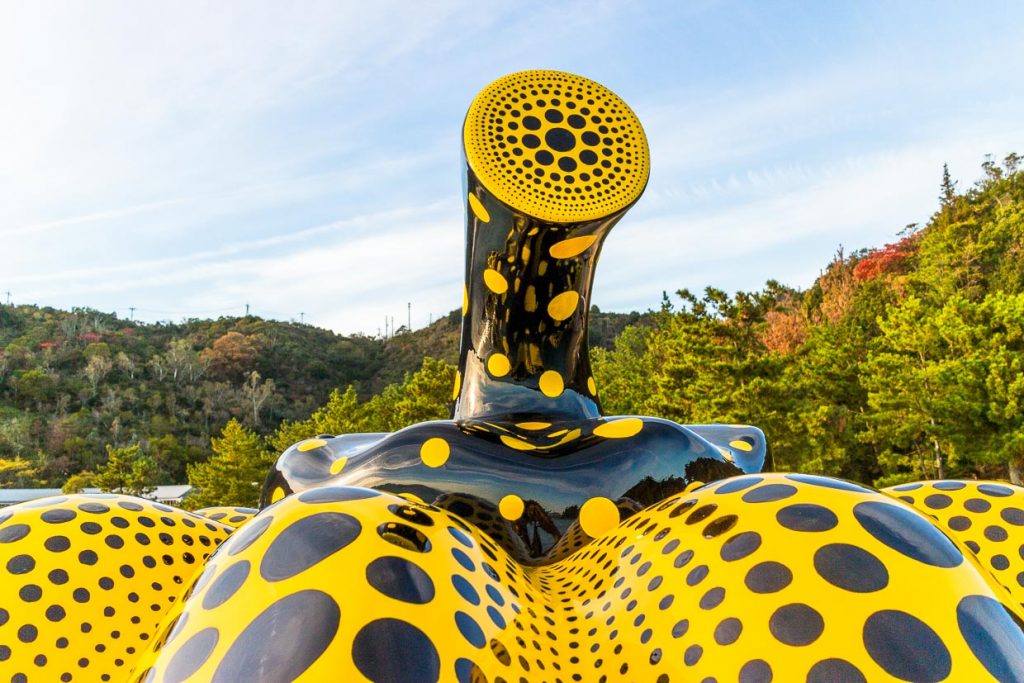
The return of the Yellow Pumpkin
In August 2021, a violent typhoon swept across the Seto Inland Sea and lifted Yayoi Kusama’s two-meter-high pumpkin from its moorings, damaging the artwork so badly that it was beyond repair. In early October 2022, just in time for the Setouchi Triennale, the new Yellow Pumpkin was presented to the public. Yayoi Kusama had supervised the work on the new art pumpkin herself. In new splendor and this time with stronger outer walls, the Yellow Pumpkin stands in the same place and should withstand the coming typhoons better than its predecessor.
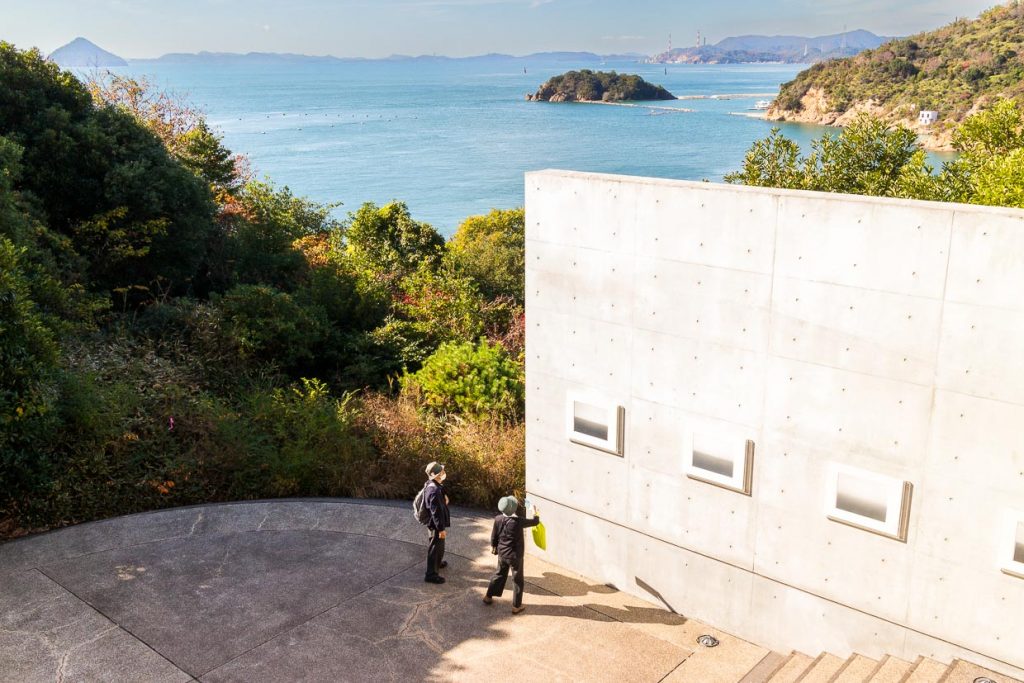
Benesse Art Site Naoshima
Benesse Art Site is a collective term for all art-related activities initiated by Benesse Holdings and the Fukutake Foundation on the islands of Naoshima, Teshima and Inujima since 1987. The foundation’s goal is to create significant spaces by bringing contemporary art and architecture into harmony with the pristine nature of the Seto Inland Sea. In this regard, it is important to know that the natural environment on these islands suffered greatly from industrial mining of copper for many decades. In particular, the island of Teshima had become almost uninhabitable due to the copper mines and illegal waste dumps. The simultaneous contact with art and nature is intended to encourage visitors from all over the world to reflect on the Benesse Foundation’s central motto of well-being. The central beneficiaries of all activities should also be the inhabitants of the islands.
From Takamatsu to the Art Islands of Setouchi
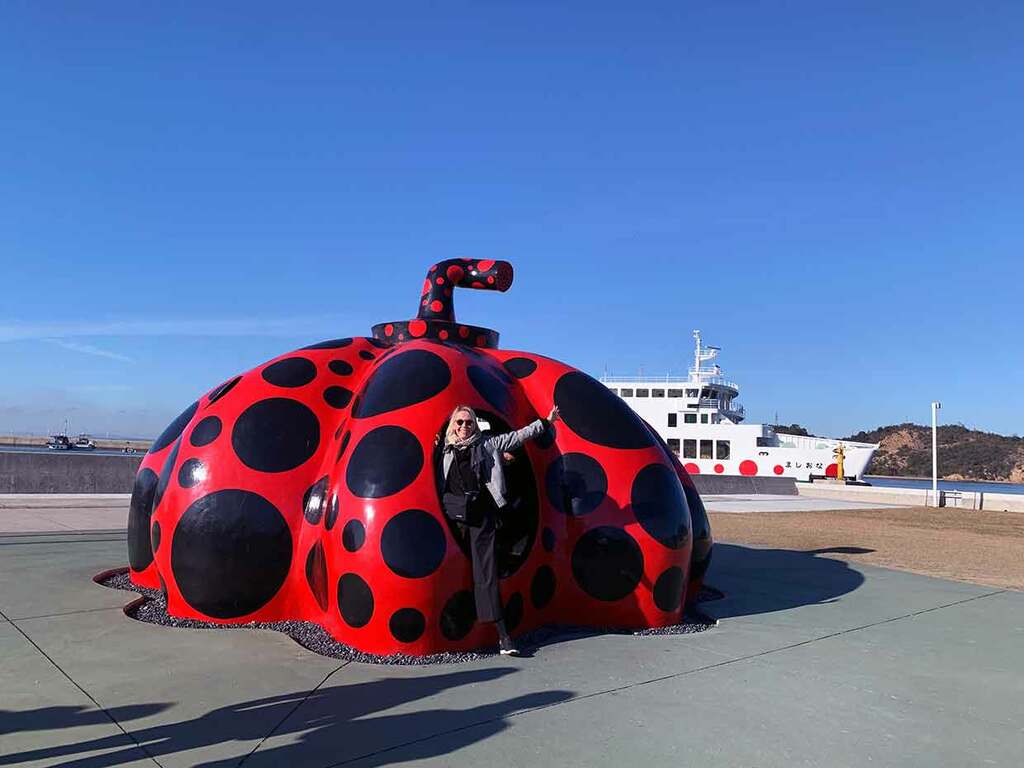
Takamatsu, the capital of Kagawa Prefecture, is an excellent starting point for day trips to the art islands in the Seto Inland Sea. Fast boats and ferries regularly shuttle between the islands. Travel times to Teshima and Naoshima are between 30 and 45 minutes. On the islands, visitors can rent e-bikes to tour the various art facilities. You should take at least one day to visit each island, because in addition to the museums and art buildings, there are also many art objects that are freely accessible in the landscape. Directly at the harbor of Naoshima, the Red Pumpkin by Yayoi Kusama already lights up the visitors. The Red Kurbis with the polka dots can even be walked on and is thus maximally Instagrammable.
Every three years, the Setouchi Art Triennial takes place in the Setouchi region. The museums and art projects of the Benesse Art Site Naoshima can be visited all year round. Japan’s most famous artist Yayoi Kusama opened her own museum in Tokyo in 2017.
The Setouchi region encompasses Japan’s largest inland sea and is surrounded by Hyogo, Okayama, Hiroshima, Yamaguchi, Tokushima, Kagawa and Ehime prefectures. 3,000 islands rise from this tranquil sea, offering visitors to Japan glimpses of a rich culture shaped by the sea away from the world’s rehearsed itineraries for a trip to Japan.

